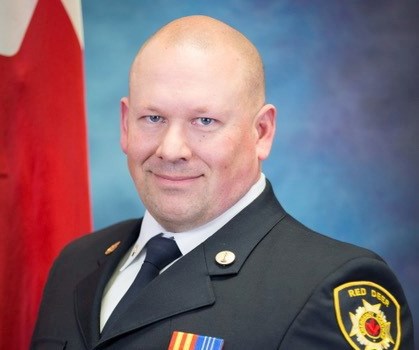OLDS — During the September spike in COVID, in some cases, it took as long as 40 minutes for ambulances to arrive on-scene to medical calls in Olds, according to director of protective services and Olds Fire Department (OFD) Chief Justin Andrew.
“There was a particular spike in September where we were spending a lot of time doing these medical first response calls where we saw EMS unit responses of upwards of 40 minutes until they would arrive on-scene,” Andrew said during the Nov. 1 Olds town council policies and priorities meeting.
Andrew said statistics rise and fall, but the department is becoming concerned with the need to respond to more and more medical call-outs and having to remain on-scene longer in those cases.
He said other communities are raising similar concerns.
Andrew said a likely factor is that while there are two ambulances in Olds, only one is available 24 hours a day. He believes the other is available on a 12-hour basis and spends much of its time providing “flex care” to and from other communities.
“We’re seeing more incidents where there’s no ambulance available immediately within the town of Olds and we’re relying on AHS’ borderless service or model where they flex ambulances from other communities to ours,” he said.
Andrew said the Olds Fire Department is trained to help out in medical calls and is happy to provide “that stopgap for EMS care.” However, he added, “it does have a burden on our system.”
"We can’t transport patients, but if critical life-saving interventions were required, they could be performed,” he said.
Andrew noted he and another OFD member are trained, advanced care paramedics.
“We could essentially provide the same EMS level of care on-scene,” he said.
However, he said, “the only thing is I cannot operate to that level of service because our protocols and our equipment are not at that level.”
He said that problem could be solved if the Town of Olds bought some equipment; for example, a cardiac monitor.
"We have to weigh the pros and cons because there’s obviously dollar figures established to that. But most of that cost is up-front and a one-time (cost),” Andrew said.
Coun. James Cummings questioned what’s standing in the way of simply utilizing a vehicle to transport patients to hospital.
Andrew said only approved licensed, inspected ambulances are allowed to transport medical patients or casualties.
“Even if the council decided that we wanted to buy an ambulance and have everything and essentially operate it, I don’t think AHS (Alberta Health Services) would support that, and so that would be the limiting factor,” he said.



